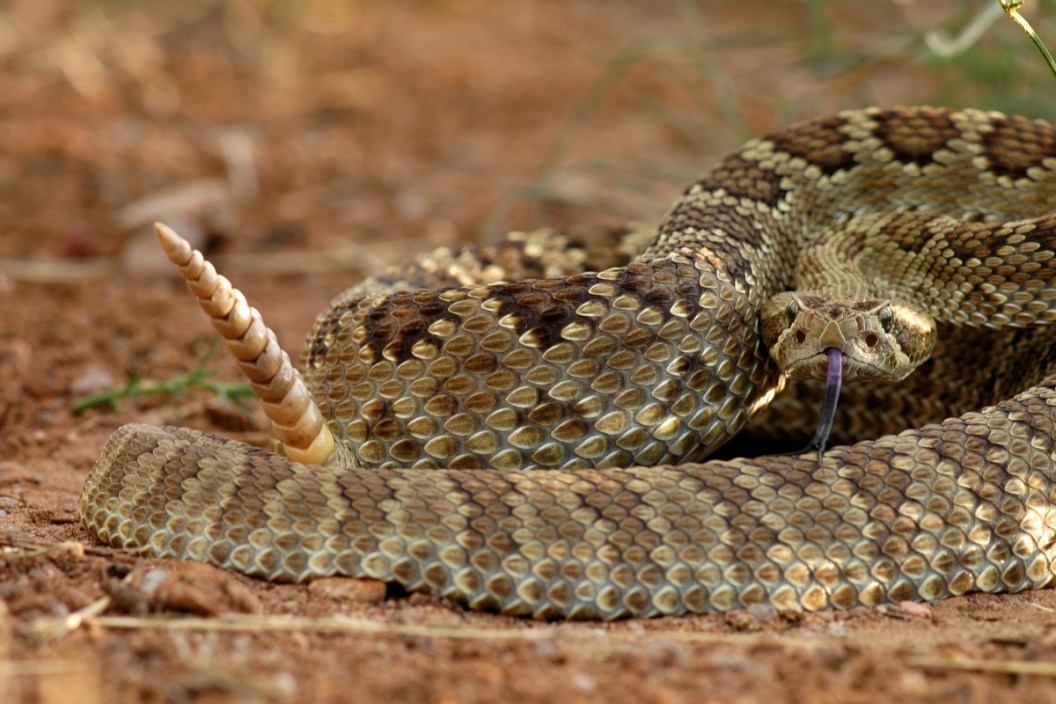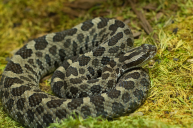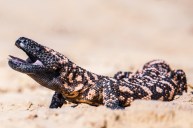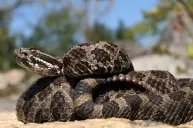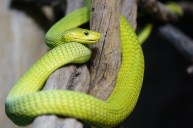California is home to a bevy of venomous snakes.
The Golden State is home to vast areas of untamed wilderness just waiting for outdoorsmen and women to discover. Due to the rugged geography and warm climate for vast parts of the state, it is also home to numerous species of snake that may be encountered every time you hike away from civilization.
Most of these animals are harmless nonvenomous snakes, like the gartersnake, Pacific gopher snake, the northern rubber boa, the California kingsnake, the yellow-bellied racer and more. The list of common snakes that pose no danger to humans is pretty long for California.
That is why for today we are going to focus only on the venomous species that call this state home.
Western Diamondback Rattlesnake
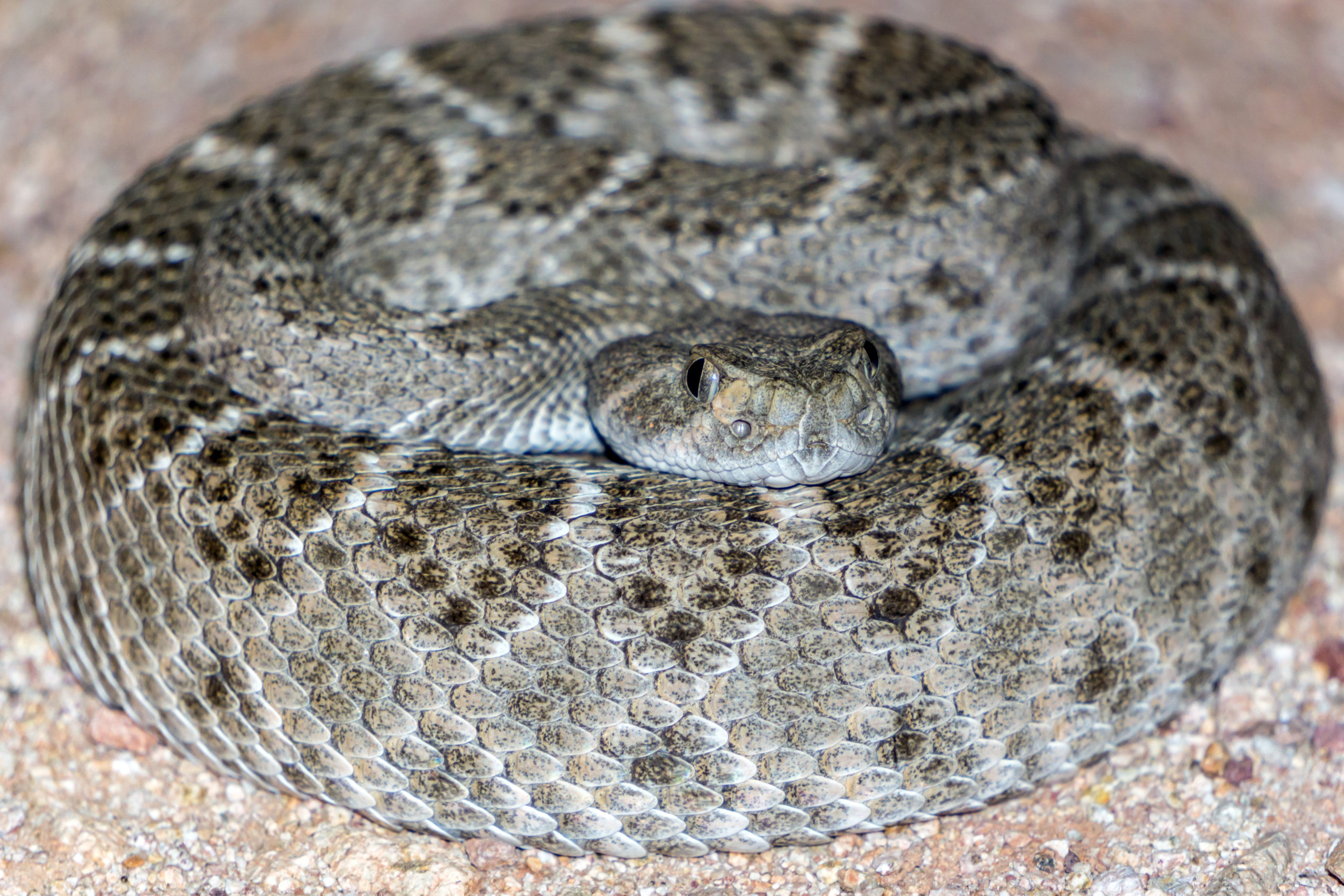
Perhaps the best known and most feared native snake in North America, Crotalus atrox is found only in the southeastern part of the state, especially near the border with Arizona. You'll see some deceptive photos of these animals on the Internet. Do not be fooled. A diamondback over five feet long is rare. This is an easy to identify species because of the triangular head, vertical slit pupils and of course, the hollow segmented trail that gives off a sound that will make anyone's blood run cold.
Rattlers come in a variety of colors. However most are brown, grey, red or yellow with dark splotches or diamonds on their backs. Once you see one, it's obvious where this western rattlesnake got its name.
All rattlesnake bites are bad, but the western diamondback is worth giving a wide berth because it often delivers a larger dose of venom than other species. The venom of this animal is often accompanied with extreme pain, and other symptoms like diarrhea and vomiting. The venom can also aggravate existing medical conditions and can be fatal in certain situations.
The Northern Pacific Rattlesnake

Found mostly in the southern California and down into the northern part of the Baja California peninsula in Mexico, Crotalus oreganus usually has a brown or gray coloration with dark blotches of black and brown. Sometimes these blotches may have white edges. It can reach upwards of five feet in length. This pit viper has a bevy of common names, but you are most likely to hear California rattlesnake or Pacific rattlesnake where it is found in the Golden State.
An easy way to tell this one apart from other rattlesnakes is to look at the tail. It is often marked with rings that are darker than the rest of the body. The belly is also often pale with spots. These snakes like to eat mostly birds, amphibians and lizards wherever they are found. Once again, it's a rattlesnake, so it's best to leave it alone if you want to avoid a bite.
Southern Pacific Rattlesnake

Wikimedia Commons: National Park Service
More of a medium-size species of rattlesnake, the southern pacific (Croatlus helleri) usually does not grow beyond lengths of 3.5 feet. According to Californiaherps, this subspecies is mostly isolated to the very southwest part of the state. The color on this one can vary but most adults are a tone of brown or black with dark blotches. On darker snakes, these blotches may not be visible. Juvenile specimens are usually easy to spot because they often have a bright orange coloration on the tail. In adults this can sometimes appear yellow.
This snake is found mostly in desert environments where they feed mostly on rodents. This rattlesnake has a nasty bite since it has a highly potent venom. Many victims of bites have had to endure higher antivenom doses than they have had to with another species. Some snakebite victims have been hit with extraordinarily high bills for this kind of treatment, so we'll give this one a wide berth.
Yellow bellied sea snake
This snake, Hydrophis platurus, has been confirmed just three times in California since the 1970s. However, the animal is highly venomous and why we felt it was worth mentioning on this list. The good news is that bites are rare, and it isn't aggressive unless attacked or handled. The last one to be spotted was found on Newport Beach in 2018 and was promptly euthanized by authorities once they realized what it was.
The yellow-bellied sea snake is a smaller species, topping out at about 3.5 feet at the most. As the name implies, it has a yellowish-colored belly with the top of the body usually being a much darker coloration. However, specimens that are fully yellow have also been reported. This is usually a tropical species that lives almost its whole life in water.
Colorado Desert Sidewinder
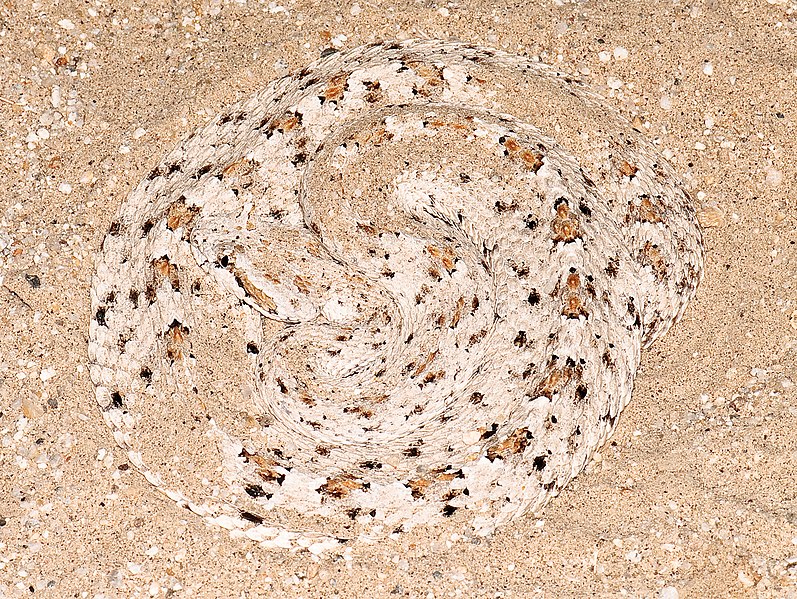
Wikimedia Commons: Marshal Hedin
Crotalus cerastes laterorepens is a tiny little rattlesnake that rarely grows larger than about 15 inches in length. It still has a highly venomous bite that you will want to avoid. This little guy has an extremely isolated range in the Sonoran Desert region and thus lives in some of the harshest environments California has to offer. The sidewinder name comes from the unusual way they undulate over the hot sand.
Because of the desert environment where this animal lives, it is often lighter in coloration than many other rattlesnake species. Tan, light brown, grey and even a whitish coloration can be found. The blotches on the back are small and slightly darker. Another tell-tale sign of this animal are the "horned" scales above the eyes.
Panamint Rattlesnake
Growing to about three feet in length, Crotalus stephensi often takes on a light brown to reddish brown or tan appearance which is speckled with darker bands. The tail segment often has a darker section of scales at the base. Like the desert sidewinder, they also have horned scales above the eyes that help give the animal a wicked appearance.
The good news is that these guys mostly hunt at night, limiting your odds of running across one by accident. This snake is again isolated to mostly the southeastern portion of the state. Panamints are often found in popular tourist destinations like Death Valley National Park and the foothills of the Sierra Nevada Mountains, so it is worth keeping an eye out if you are hiking or camping in those areas.
Mojave Rattlesnake
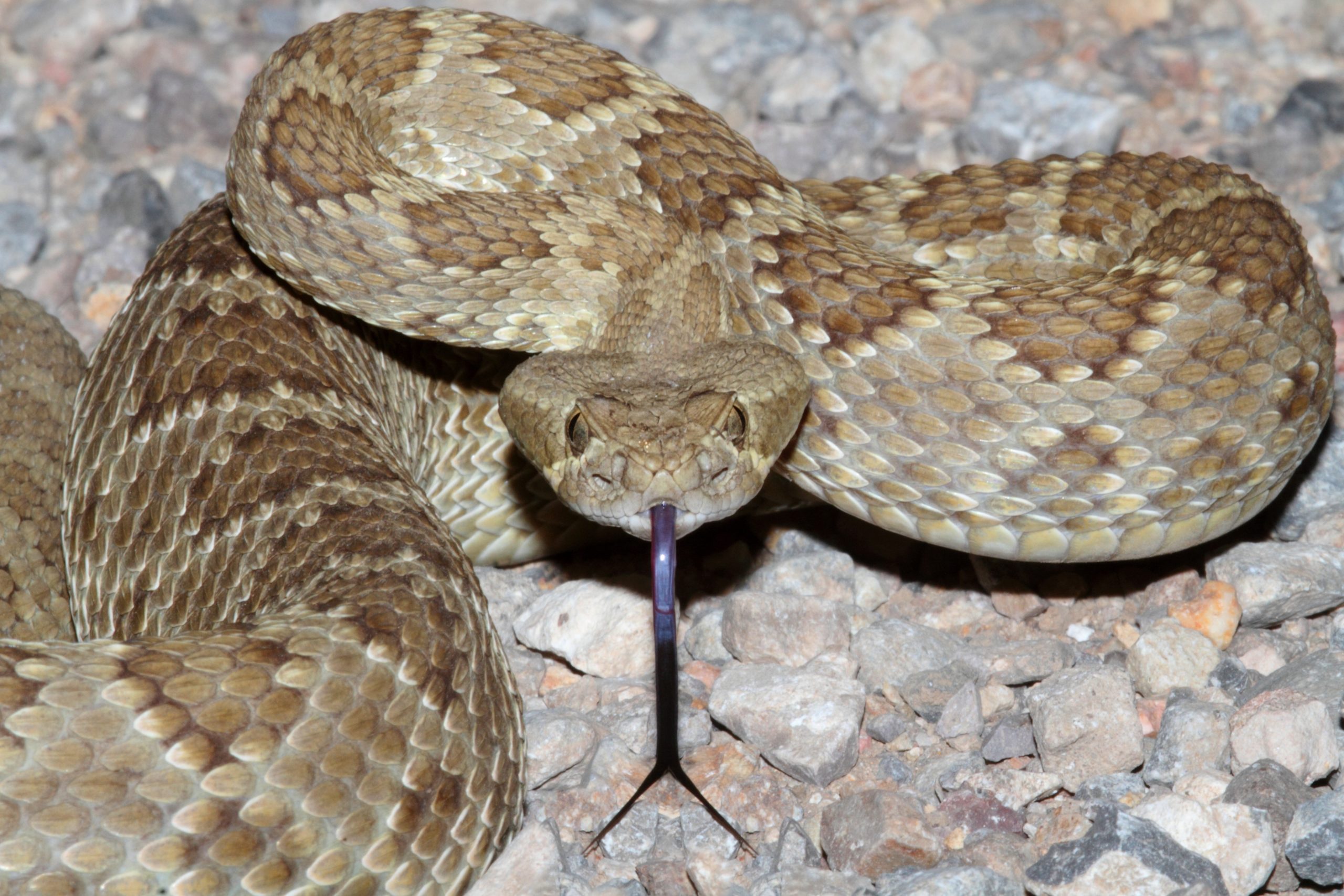
Crotalus scutulatus only grows to about three feet in length but it is an animal you'll want to avoid at all costs because its venom is often more potent than some other species. People have died from bites from this snake. Fortunately, cases of that are rare. This is another desert or mountain snake residing mostly in the southeastern part of the state.
Coloration on this snake resembles most other rattlesnakes of California. Tan, light brown and yellowish-brown are common variations, but watch out for darker grey specimens too. The body is marked by rectangular or diamond-shaped blotches that are darker than the body. Watch for white and black banding on the end of the tail before the rattles too.
Red Diamond Rattlesnake
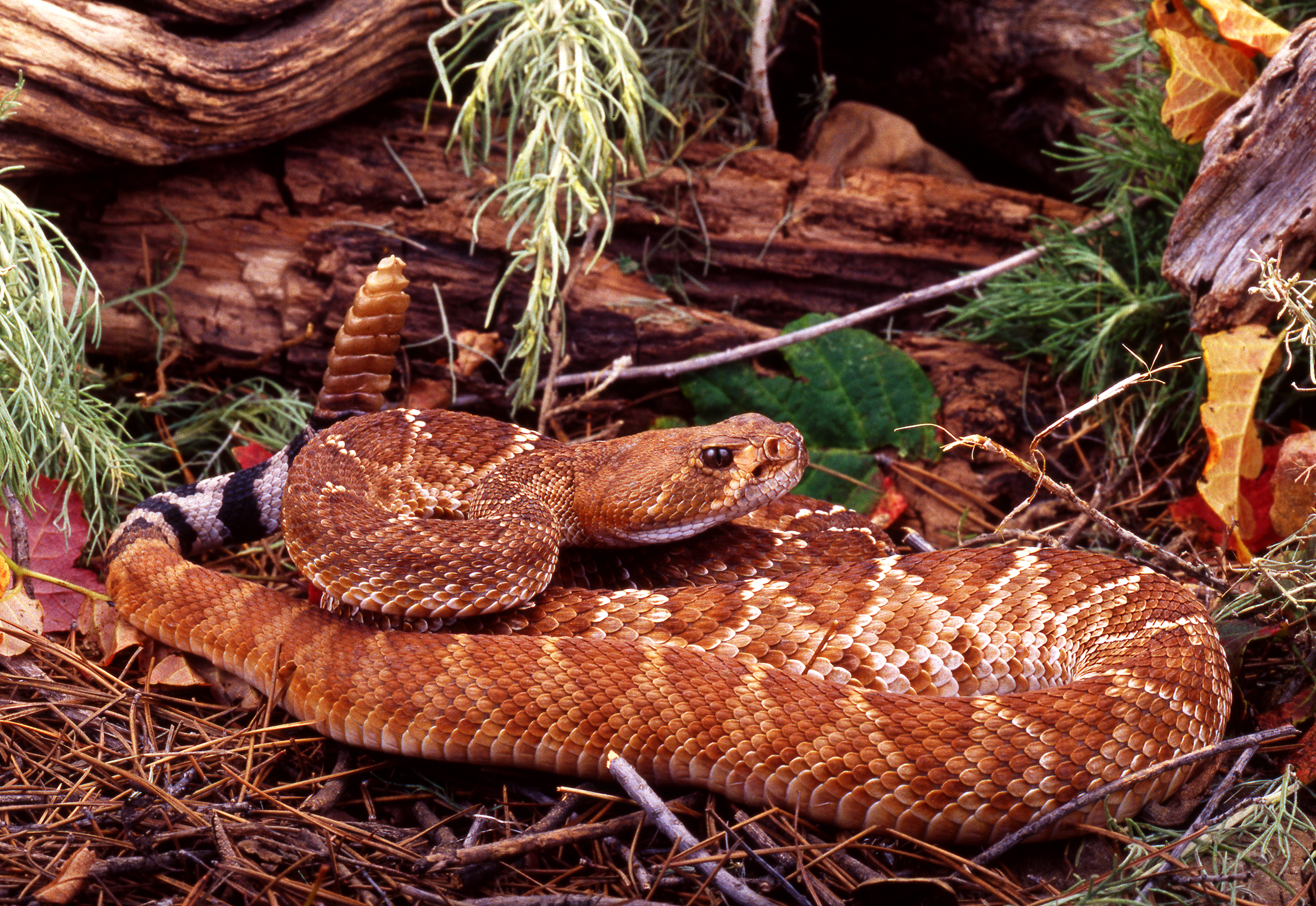
Good news for anyone who dislikes snakes, this one has an extremely isolated range confined mostly to San Diego County. Their wider range extends down into the Baja California peninsula. Crotalus ruber grows to about 4.5 feet at the largest. However, most specimens are considerably smaller.
This species may be a little easier to differentiate from other rattlers because it often has a light pink or reddish coloration. The end of the animal's tail is often marked with black and white rings just before the rattle segment helping make this one of the more unique-looking rattlesnakes out there.
Southwestern Speckled Rattlesnake
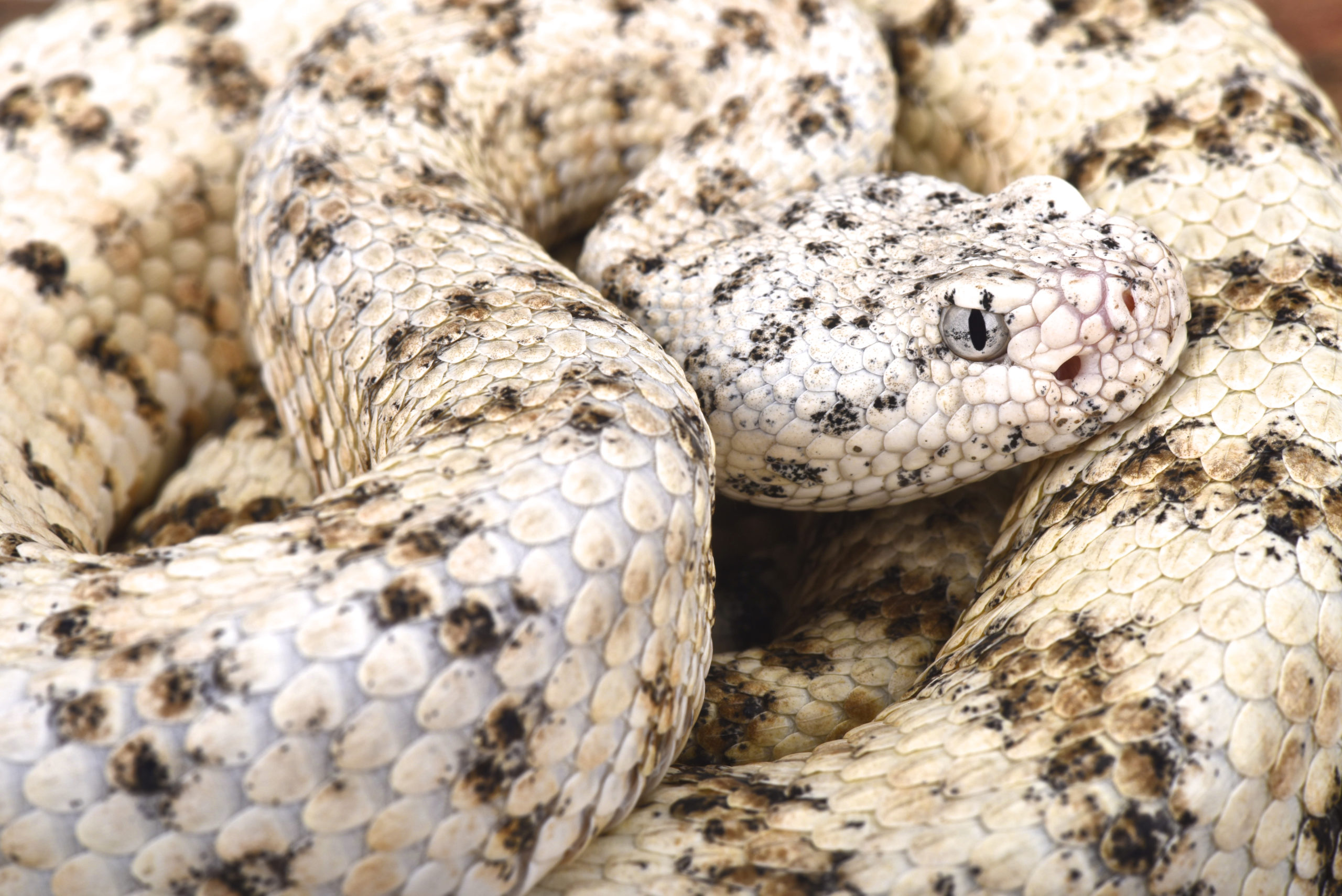
Crotalus Pyrrhus can grow up to four feet in length. Most specimens are significantly smaller than that. This rattlesnake's color patterns can vary wildly as the name "speckled" implies. The body is usually brown, grey or pink. However, much lighter specimens like the one in the photo above are sometimes found. The snake's back is marked with patterns that may be blotches, speckles or even bands and rings near the base of the tail. These markings are usually black, but may also appear grey, white or yellow. Much of the coloration depends on the snake's environment. They will use this coloration to help hide from predators.
This species is isolated mostly to southern California where it lives out in the desert. Because of the hot temperatures, encounters with this snake can be rare, it is largely nocturnal. It is worth noting that this species is sometimes found at higher elevations up in the mountains. Keep your eyes and ears open during your camping, hunting or hiking adventures!
For more outdoor content from Travis Smola, be sure to follow him on Twitter and check out his Geocaching and Outdoors with Travis YouTube channels.
NEXT: THE AXIS DEER AND HOW THEY'RE IMPACTING PARTS OF THE UNITED STATES
WATCH
